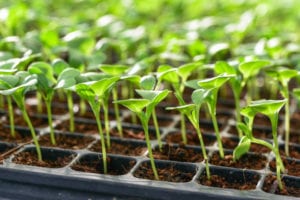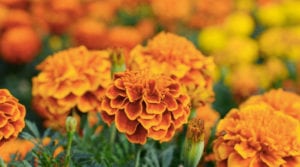
Growing your own Fruit & Vegetables can be an incredibly rewarding pastime and home-grown produce is not only delicious but also cost-effective, providing you don’t factor in your time. However, many home gardeners use harsh pesticides, herbicides and chemical fertilizers to help their garden grow. This is not always necessary when you are growing as a hobby, and fruit & veggies are much more nutritious if they’re grown organically. Fortunately, it’s easy to switch to organic growing and the following quick tips will help.
Step 1 Prepare your soil.

bluedog studio/Shutterstock
The soil is the foundation of your garden, and it is important to make sure it’s full of the right nutrient’s plants need to grow and thrive. Mix in organic material like compost or humus and consider having your soil tested to ensure it is not lacking in any way. Proper soil conditions can make the difference between a poor crop and award-winning vegetables.
Step 2 Choose your crop.

surachet khamsuk/Shutterstock
The second step in building an organic garden is to choose the right crop, knowing what you intend to grow will affect how you fertilize & structure your soil. Also, this will help you decide if you want to purchase seedling plants or start your garden from seeds. If you start early enough, you can use seeds. If not, you can purchase organic plants from your local nursery.
Step 3 Organise your garden.

Marigolds deter some insect pests.
Milart/Shutterstock
Did you know some plants naturally protect other plants from disease and pests while others can actually add important nutrients to the soil while growing? For example Peas and other Legumes add nitrogen to the soil while Marigolds deter bugs and if you plant them around the perimeter of your garden, they’ll help protect your other plants from insect attack. Before transferring your plants into your garden, mark where you’re going to plant them. Make sure there is plenty of space between plants so they have room to grow and thrive.
Step 4 Use Natural pesticides, herbicides and fungicides.

Ladybugs are natural Aphid predators
Ger Bosma Photos/Shutterstock
It is said that home gardeners comparatively use more pesticides & chemicals on their gardens than farmers do, and this is probably due to home gardeners being less cost conscious. Some of the cheapest alternatives are also very environmentally friendly with for example mild detergent sprays being able to protect many plants from harmful pests, while natural plant extracts such as essential oils are also effective in some circumstances. Also encouraging natural predators like frogs and ladybugs can keep your garden healthy.
Step 5 Regular Maintenance

Elena Masiutkina/Shutterstock
Watering and weeding are important and keeping on top of these will both improve your eventual harvest and reduce the need for pesticides & chemicals. Take care to not over water your plants as this can encourage fungus and rot problems. The soil should be moist, not drenched and there should be good drainage for when Mother Nature decides to do the watering for you. Weed on a regular basis to make sure your plants don’t have to compete with them for nutrients and room to grow.

Kei Shooting/Shutterstock
Choosing organic gardening for a hobby will not only improve your health (gardening is relaxing and good gentle exercise), but will also help improve the environment, and may even improve your cooking skills as you experiment with the wide range of produce you can grow.





